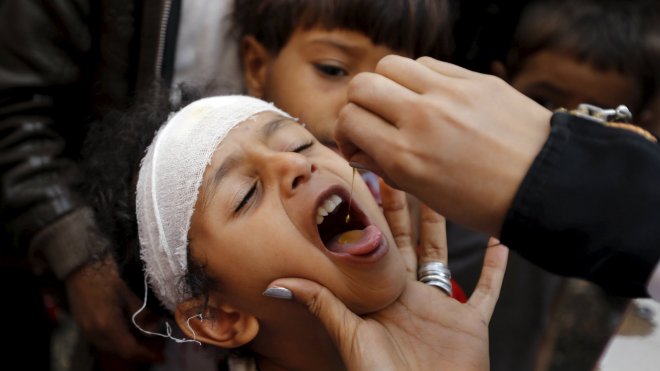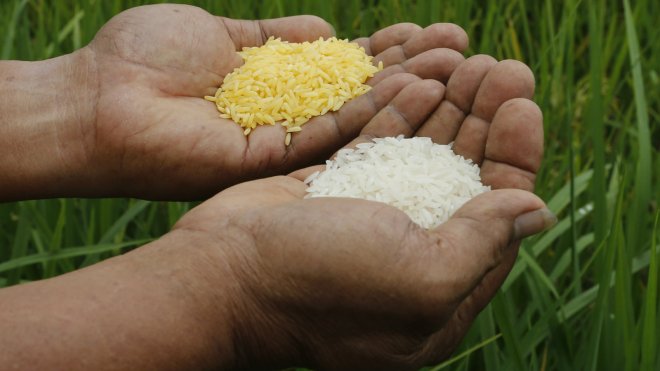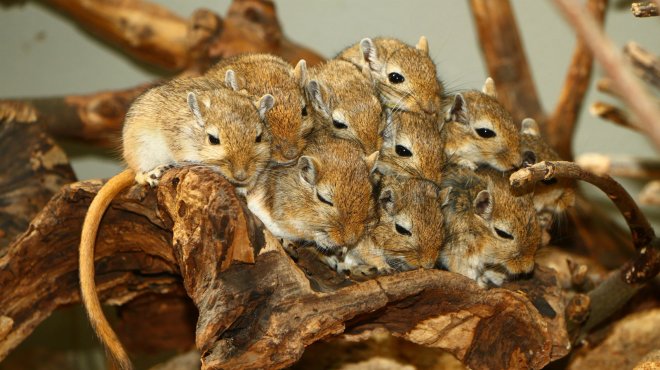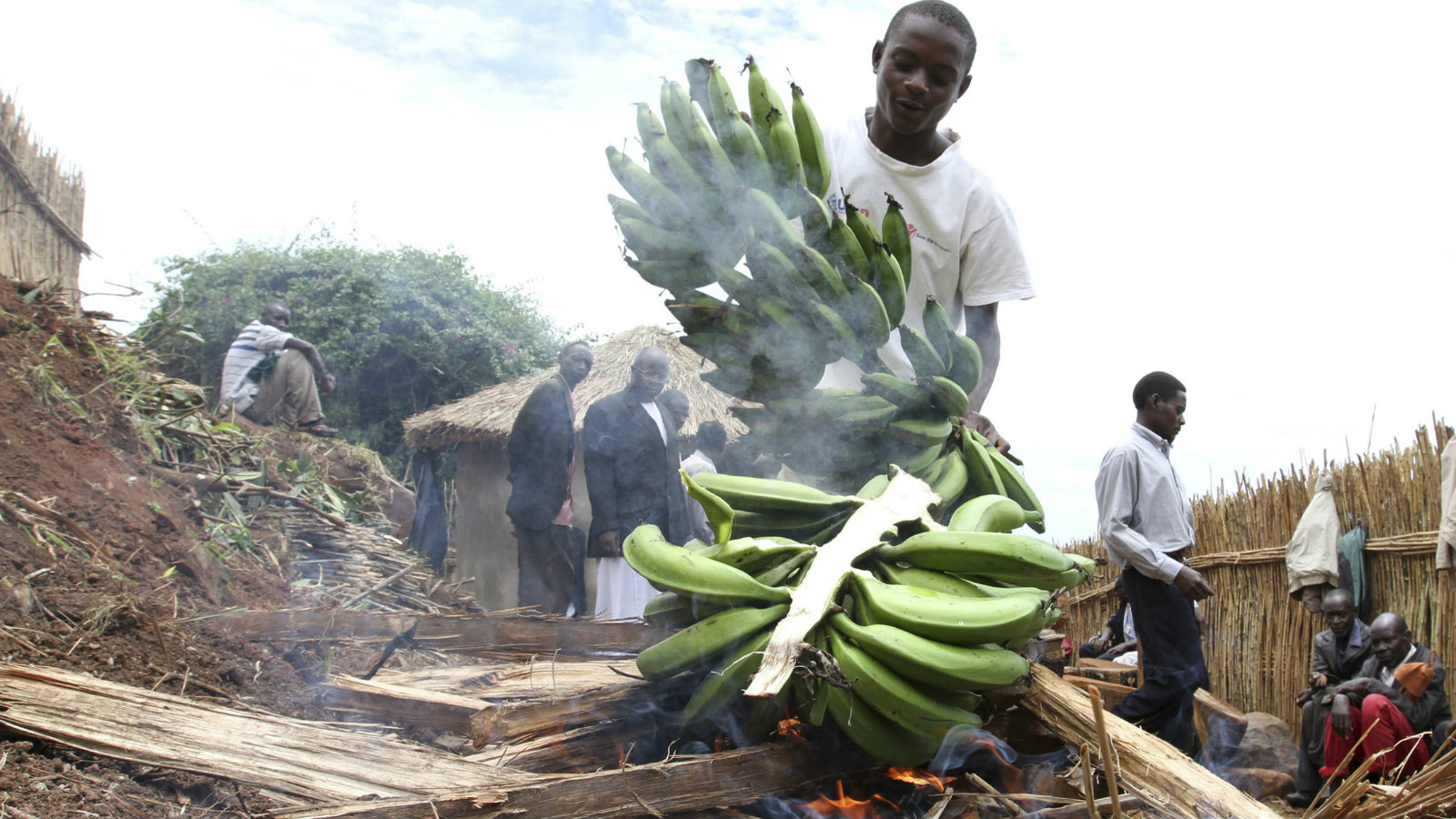In the winter of 2014, students at Iowa State University received emails asking them to volunteer for an experiment. Researchers were looking for women who would eat bananas that had been genetically engineered to produce extra carotenes, the yellow-orange nutrients that take their name from carrots. Our bodies use alpha and beta carotenes to make retinol, better known as vitamin A, and the experiment was testing how much of the carotenes in the bananas would transform to vitamin A. The researchers were part of an international team trying to end vitamin A deficiency.
The emails reached the volunteers they needed to begin the experiment, but they also reached protesters. “As a student in the sustainability program, I immediately started asking questions,” said Iowa State postdoc Rivka Fidel. “Is this proven safe? Have they considered the broader cultural and economic issues?”
Fidel and a group of six other alarmed students began asking the researchers and the school administration to publicly answer questions about the experiment. They started showing up at events bearing a petition with their list of questions. Sometimes one of them would dress up as a banana.
It’s not the first time there has been controversy over the use of genetic engineering to solve vitamin A deficiency. Since 1982, researchers have been trying to genetically engineer carotenes into rice. In 2000, the cover of Time declared that “Golden Rice,” as it was named, could “save a million kids a year.” But that was premature: The successful development of Golden Rice has been thwarted by both technical challenges and protesters.
This is a lot bigger than a squabble between student protesters and scientists. More than 100,000 children around the world still die every year from a lack of vitamin A. The pro-GMO and anti-GMO contingents have accused each other of taking advantage of these vulnerable people to advance their own causes. There’s no doubt that biotechnology boosters have used Golden Rice as a public-relations tool, and there’s also no doubt that it could be a legitimate solution that has been delayed by protests.
Now we’re seeing the beginnings of the same debate as researchers from Iowa State, Uganda, and Australia team up to reengineer the staple food of Uganda, the cooking banana. Clearly, this strategy can be both difficult and controversial, so why do people keep trying to genetically engineer their way out of malnutrition?
Fidel told me she and her friends had found it nearly impossible to extract information from researchers, or from the Gates Foundation, which is providing funding for this project. Too often conversations about these kinds of issues simply reverberate within their respective echo chambers. So to bridge the gap I took the gist of the students’ questions to people at the Gates Foundation, scientists working on the banana, and the one person who may have done the most to fight vitamin A deficiency — an ophthalmologist who has no interest in either promoting or bashing GMOs. Their answers, below, might help alleviate some suspicions and fears about the GMO banana project.
Is vitamin A deficiency really that bad?

A boy gets vitamin A drops at a school in Yemen.REUTERS/Khaled Abdullah
It’s terrible. Think lead poisoning on steroids. Back in the 1980s, the ophthalmologist Alfred Sommer was in Indonesia, trying to prevent a form of blindness that results from nutrient deficiencies. When people got vitamin A, it stopped them from going blind as expected, but Sommer was astonished to discover that they were also nine times less likely to die. It wasn’t clear at that time, but now we know that there are dozens of different bodily processes that require vitamin A.
Without it, fetal organs like lungs don’t develop correctly, often leading to infant death. Children without enough vitamin A in their systems can’t fight off diseases, and common germs become fatal. Without vitamin A, mucus membranes in the eyes, throat, and lungs dry up and turn to skin. “The cornea will melt,” Sommer said, bringing on blindness. And the purpose of the mucus in our lungs is to tangle up invading germs and prevent infections. The combination of a dysfunctional immune system and dry lungs is devastating. The World Health Organization estimates that 250,000 to 500,000 children go blind each year, and half of them die, because they aren’t getting enough vitamin A.
“There has been an evidence-based obsession with solving vitamin A deficiency because correcting it averts 23 percent of mortality in children [between 6 months and 5 years old],” said Shawn Baker, director of the nutrition team at the Gates Foundation who has worked on this problem throughout his career.
Tackling this problem is important for environmental reasons as well as the obvious humanitarian ones: Abundant historical evidence suggests that reducing childhood mortality is a necessary step toward leveling off population growth. Parents tend to spread their resources between fewer children when they are confident their kids aren’t going to die.
Aren’t there simpler ways to address vitamin A deficiency?
There are much simpler ways of delivering carotenes or vitamin A to people who need it. When Sommer first started working on vitamin A deficiency, he simply gave people pills or squirted fortified oil directly into their mouths, and that worked well. He found that you could nearly eliminate a person’s deficiency by providing one large dose every six months. Governments all over the world have done just that. But there’s a catch: You have to make sure that doses travel every dirt road to every small village, twice a year. You need every single kid in those villages to show up to take their medicine. In practice, that just doesn’t happen.
“In countries with good supplementation programs, about 70 percent of kids get it,” Sommer said.
So Sommer and other researchers tried different routes. They mixed carotenes with MSG, a seasoning that the very poor use every day in some parts of the world, but when it was mass produced “it glumped up and turned yellow,” Sommer said.
They tried handing out little baggies of nutrients for sprinkling in food but just couldn’t get people to use them. They tried to push people to eat more nutritious foods, but the good sources of vitamin A — eggs, milk, and organ meats — were often too expensive for the poorest. Fruit was also a luxury. But what about vegetables?
Dark leafy greens are rich in carotenes, and they’re abundant in many poorer parts of the world. “For years it bothered me,” Sommer said. “Why are kids vitamin A deficient when there are green leafy vegetables everywhere you look?”
Let them eat kale?

A market in a village near Bujumbura, Burundi. Bananas are a staple throughout the region.REUTERS/Goran Tomasevic
There was a good explanation for that mystery. It turns out that all the fiber in vegetables stymies our body’s attempts to absorb their carotenes. Researchers used to think that a person would need to eat six molecules of vegetable carotenes to make one Vitamin A molecule. Now scientists know we need 24 vegetable carotene molecules to make a single Vitamin A molecule. To get their daily allowance from leafy greens, people would have to gorge.
Is industrial agriculture to blame for vegetables and other crops becoming less nutritious?
If you start out with the belief that the industrialization of agriculture is the source of nutrition problems, then genetically modifying crops may feel like a step in the wrong direction. After all, many people see GMOs as a symbol of Big Food.
Vandana Shiva, a prominent critic of GMOs and of Golden Rice in particular, argues that the Green Revolution (the push to increase farm yields in Asia and South America with modern seeds and chemicals) caused nutrient deficiencies by replacing dietary diversity with uniformity.
But this argument falls flat in the case of vitamin A deficiency because the problem is prevalent in places that the Green Revolution never reached — like tiny villages in Africa. In fact, the people fed by industrial agriculture are the least likely to lack vitamin A. In Guatemala and Honduras, Sommer told me, even the poorest people eat sugar from centralized mills, fortified by their governments with vitamin A. In Uganda, many of the people hit hardest by vitamin deficiency are subsistence farmers using traditional methods to grow a diversity of foods.
If it’s not industrial agriculture that causes vitamin A deficiency, perhaps it’s agriculture in general. When humans stopped hunting and regularly eating liver, they lost a prime source of vitamin A. In her book Vitamania, the journalist Catherine Price points out that 74 percent of Americans wouldn’t get enough vitamin A without supplements and fortified food. In many places around the world, the poorest people grow their own food, so they don’t benefit from fortification.
So, after trying everything else, nutrition experts looked for ways to grow carotenes in the basic staples. They had great success in parts of Africa using traditional breeding to boost the carotenes in corn and sweet potatoes. But in Uganda, the staple food isn’t corn or sweet potato; it’s banana, and banana is devilishly difficult to breed. Many species of banana have stopped reproducing sexually, making them next to impossible for breeders to alter … unless they use genetic engineering.
Would carotene-fortified bananas actually work, given the difficulties faced by Golden Rice?

Golden Rice. REUTERS/Erik De Castro
Carotenes in starches — like rice or bananas — convert to vitamin A more efficiently than those in vegetables (because starches have less fiber), but you still need to eat enough. When Golden Rice landed on the cover of Time, scientists had only figured out how to make it produce a tiny bit of carotene. Researchers eventually solved that problem then ran into other roadblocks. Every new obstacle meant more delays and more regulatory hurdles, largely because of the controversy over GMOs. It didn’t help that protesters occasionally ripped up test fields. Anti-GMO activists blame delays on the complexity of the technical problem, while pro-GMOers blame the activists. In reality, one compounded the other.
So will this banana project follow the same tortuous path of Golden Rice? Maybe not: The banana researchers have learned from the Golden Rice scientists, and with their aid have managed to avoid the same technical traps. In fact, researchers already have produced a banana that produces enough carotenes, said James Dale, head of a lab at Queensland University of Technology in Australia, which is working with Ugandan researchers on the banana.
So far, Dale’s team has figured out how carotene levels in the banana change in the time between getting cut from the tree and winding up in your mouth (they actually increase), how cooking affects the nutrients (a loss of 20-30 percent), and how much is absorbed in the gut of a Mongolian gerbil (plenty, and actually a lot more when the bananas were cooked). Gerbils synthesize vitamin A like humans do, but gerbils are obviously different from humans in many ways (they are far more adorable), which is why we now have students at Iowa State eating bananas.

Mongolian gerbils.H. Zell
Anti-GMO activists have dismissed previous (Golden Rice) studies of carotene conversion because participants eat more fat than poor people. That’s important, because fat helps us absorb carotene. But we humans don’t need much fat to begin absorbing carotene and converting it to vitamin A, just three to five grams a day, far less than even the poorest people eat.
Aren’t bananas already perfectly nutritious?
Some are, but not the ones that people eat as a staple in Uganda and other areas. Wilberforce Tushemereirwe, the Ugandan leader of the banana project, explained in an email that the cooking banana that serves as their staple food has few carotenes. They found they could rev up its nutrient production by importing a gene from a carotene-rich Micronesian banana.
Wouldn’t it be hard to spread the new banana plants?
If it is hard to get vitamin A supplements to every small village, getting baby banana trees to small farmers will be even harder. But Uganda’s government won’t have to do it every six months, because the bananas reproduce. And while kids might miss a semi-annual medical visit, they won’t skip dinner.
Still, it’s an open question as to whether farmers will embrace the new banana trees. In surveys Ugandan farmers have said they would be interested in planting the new trees, but no one knows how motivated they will be to use them. If the bananas require special care they might fail in the same way that baggies of nutrient sprinkles failed. Farmers said they had no problem with the vitamin-A bananas, but really wanted the bananas that are being engineered to resist diseases.
Is this a Trojan Horse for industrial agriculture?
Here too, the banana researchers have learned from the travails of Golden Rice. Researchers developed Golden Rice in partnership with the biotech company Syngenta, and the company retained its patents to control the rice. And activists argued that the company might use this ownership to exploit the poor.
The banana isn’t going down that path. It won’t be patented, and the government will probably give it away to farmers free. Once established, bananas reproduce by sending up genetically identical shoots, which farmers could replant or sell. It won’t be like hybrid corn. Farmers can only grow that if they buy new seeds every year.
The cast of characters is also different. This time, the motivation comes not from a biotechnology company, or a Western charity, but from Ugandans who have an intimate understanding of what small farmers need. It was spearheaded by Tushemereirwe, a government scientist, who formed a partnership with Dale, the university scientist in Australia, and together they applied to the Gates Foundation for funding.
When I asked Tushemereirwe if he would connect me with a small farmer, he said that he would start the process, and that it might take a while. “However, I want you to note that I come from a banana growing rural area where I am a small banana farmer. My extended family is representative of rural peasants I am talking about and I am working hard to solve our problem.”
Most of the scientists working with Tushemereirwe also grew up in families of subsistence farmers and return home often. No one person can speak for all small Ugandan farmers, but this group of Ugandan scientists seems better equipped than most to act in the best interest of their communities.
Is it safe?
Anti-GMO activists have pointed out that, in large doses, vitamin A is associated with birth defects, so they’ve warned that the banana could pose dangers. “That’s rubbish,” Sommer told me.
Sure, it would be dangerous for a pregnant woman already getting enough vitamin A to take massive doses of it.
“[But] we are not talking about vitamin A,” Sommer said, “we are talking about beta-carotene. It’s impossible to overdose on beta-carotene. If you get too much, the body just stops converting it. You might turn a little orange, but that’s the worst thing that would happen.”
Dale also points out that the genetic engineering didn’t make radical changes, it just inserted a gene from one banana into another. “We’re just up-regulating a natural process,” he said.
It’s impossible to prove that any new technology is safe, but their banana will go through a lengthy safety assessment before farmers can get it in Uganda. Unbiased observers have told me they are not worried about adding carotenes.
Why invest so much money in something unproven?

REUTERS/James Akena
Golden Rice still hasn’t panned out, so why double down? When I asked Baker at the Gates Foundation why they had decided to fund this project, he explained that it could provide a systemic solution. It’s attacking the cause. Just providing supplements is an incomplete treatment of the symptoms. Despite the high price of genetically engineering crops one study of Uganda’s banana project called it a “very cost-effective” option.
Baker was quick to point out that the Gates Foundation isn’t just tackling vitamin A deficiency through genetic modification. It has also helped finance programs to add carotenes to crops through traditional breeding. It backs sanitation projects to reduce the damage done by nutrient-robbing parasites and invests a lot of money in supporting optimal breastfeeding, the best way for mothers to protect their babies against disease.
More broadly, the foundation is aiming at the social and economic problems that gang up on subsistence farmers. From that perspective, the millions the Gates Foundation spends on the banana project looks like a modest investment. It’s a risk — it may not pan out — but if the banana does work as hoped, it will really will save thousands of lives. Despite all the other efforts the Ugandan government and charities have currently underway (fortification of flour and cooking oil, distribution of supplements, dietary education), 38 percent of children under 5 are vitamin A deficient, Tushemereirwe said.
Why are Americans so interested?
There’s just something about genetic engineering that stirs up passion. When scientists were boosting the carotenes in corn through traditional breeding, for instance, activists weren’t raising the alarm that it might be a danger to the people eating it. In the American mind, a “GMO” is a symbol for profit-driven corporations, for big agribusiness, for endless uniform fields of corn, and restrictive thickets of patents.
But it’s essential to look beyond that symbolic acronym if we want to weigh the good of individual genetically modified organisms. In this case, we have public scientists developing a crop to serve the poor, a crop that fits into diversified farm systems and would be controlled, bottom up, by farmers.
When an American child is afflicted with terminal illness, we demand treatment, even if it’s not guaranteed to work. I haven’t been able to come up with a good reason to think of Ugandan children any differently. This banana might do a lot of good, but only if we give it the chance.



